 When we lived in Pittsburgh in the 1990s, my mother came to visit for a few days. She always wanted to see the Henry Clay Frick mansion, so we drove to Wilkinsburg, just outside the Pittsburgh city limits, to see it. Frick was the chief lieutenant of Andrew Carnegie and the architect of Carnegie Steel’s efforts to dislodge the union of skilled ironworkers from its mills. This led to the Homestead Steel Strike in 1892, one of the most famous working class struggles in U.S. labor history. Frick and Carnegie later parted company and feuded the rest of their lives. Frick abandoned his Pittsburgh home (though his daughter lived their until her death) and built a much grander residence in Manhattan. He said that the smoke from the mills in Pittsburgh was damaging his paintings.
When we lived in Pittsburgh in the 1990s, my mother came to visit for a few days. She always wanted to see the Henry Clay Frick mansion, so we drove to Wilkinsburg, just outside the Pittsburgh city limits, to see it. Frick was the chief lieutenant of Andrew Carnegie and the architect of Carnegie Steel’s efforts to dislodge the union of skilled ironworkers from its mills. This led to the Homestead Steel Strike in 1892, one of the most famous working class struggles in U.S. labor history. Frick and Carnegie later parted company and feuded the rest of their lives. Frick abandoned his Pittsburgh home (though his daughter lived their until her death) and built a much grander residence in Manhattan. He said that the smoke from the mills in Pittsburgh was damaging his paintings. 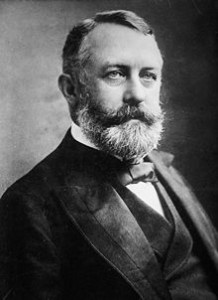 My mother enjoyed the tour of the Frick house. The grounds are pretty and the furnishings grand. The docent’s patter about the family was interesting enough. Much was made of their philanthropic endeavors. Nothing was mentioned of Frick’s vicious personality, his rapacious business practices, or his and Carnegie’s treatment of their workers. Not a word of the attempt by Emma Goldman’s lover, anarchist Alexander Berkman, to kill Frick during the strike. As the docent spoke, I thought of my grandmother, my mom’s mother, who worked as a governess in Manhattan for people like Frick. She told me about their ignorance of ordinary people, their expectation that they could and would always get what they wanted, their emotional detachment, even from their children. Frick seems to fit her impressions. When we visited the Frick Museum in Manhattan, once part of his home there, we learned that, as an old man, a lonely Frick often wandered the house late at night looking at his paintings. Karen told an enthusiastic worker that this was the only museum she had ever been in that gave off such an alienating and sterile aura. Surprisingly, he said he felt the same.
My mother enjoyed the tour of the Frick house. The grounds are pretty and the furnishings grand. The docent’s patter about the family was interesting enough. Much was made of their philanthropic endeavors. Nothing was mentioned of Frick’s vicious personality, his rapacious business practices, or his and Carnegie’s treatment of their workers. Not a word of the attempt by Emma Goldman’s lover, anarchist Alexander Berkman, to kill Frick during the strike. As the docent spoke, I thought of my grandmother, my mom’s mother, who worked as a governess in Manhattan for people like Frick. She told me about their ignorance of ordinary people, their expectation that they could and would always get what they wanted, their emotional detachment, even from their children. Frick seems to fit her impressions. When we visited the Frick Museum in Manhattan, once part of his home there, we learned that, as an old man, a lonely Frick often wandered the house late at night looking at his paintings. Karen told an enthusiastic worker that this was the only museum she had ever been in that gave off such an alienating and sterile aura. Surprisingly, he said he felt the same.
We have seen many shrines to the rich in our travels. The most famous one is the Hearst Castle at San Simeon in California. The pattern seems to be that a fabulously wealthy man builds a monument to himself, uses it with his family, and when his heirs no longer want or cannot afford to maintain it, they give it to the government. After that, the property becomes a tourist attraction, to which people of lesser means flock in droves to ooh! and ah! over material possessions they can only imagine owning.
There are several grand homes around Lake Tahoe, where we have been staying the past two weeks. Lake Tahoe, which sits astride the Nevada-California border, is the most beautiful lake we have seen. It is the largest alpine lake in North America, and with an average depth of more than 900 feet, it contains enough water to flood the entire state of California to a depth of fifteen inches. Tahoe is an ancient home of the Washoe Indians, whose language gives the water its name; the first white person to see it was John C. Fremont of Donner Pass infamy. Whites began to arrive in large numbers with the discovery of silver at the Comstock Lode in Virginia City, Nevada in 1858. Over the next few decades, 90 percent of the dense forests surrounding the lake were cut down to feed the insatiable demand for lumber by the mines. There are still fine and tall Ponderosa, Sugar, and Jeffrey pines, and on our hikes we marveled at their height but tried to imagine what it would have been like to see the primeval forest.
As early as the mid-1860s, whites began to see the recreational potential of the Tahoe region. Tahoe City was founded in 1864 as a resort for people from Virginia City. However, it wasn’t until the early twentieth century that the elite began to build large and elaborate rustic summer homes, some of which are still standing and are now government-owned. Three of them are at the Tallac Historical Site, and one is at Emerald Bay. They are open to the public. For a fee.
The Tallac houses are better described as compounds, with large houses surrounded by smaller ones, including quarters for an array of household servants, from maids to the children’s tutor.  One owner had a nearby creek diverted to create a trout pond and a waterfall. Arboretums, elaborate gardens, and private beaches and docks completed what must have been idyllic places. For a time, there was also a luxury hotel, with fine dining and a casino. So during the day, our privileged rich could horseback ride on the beach, play polo, swim, fish, or boat in the lake, or just relax on their extensive grounds. At night, they could dine and gamble.
One owner had a nearby creek diverted to create a trout pond and a waterfall. Arboretums, elaborate gardens, and private beaches and docks completed what must have been idyllic places. For a time, there was also a luxury hotel, with fine dining and a casino. So during the day, our privileged rich could horseback ride on the beach, play polo, swim, fish, or boat in the lake, or just relax on their extensive grounds. At night, they could dine and gamble.
Some of the names associated with Tallac were George P. Tallant, Lloyd Tevis, George A. Pope, E.J. “Lucky” Baldwin, Dextra Baldwin Winter, and Walter S. Heller. These were California royalty, with large fortunes originating in mining, real estate, transportation, gambling, oil, and banking. Baldwin, who owned the hotel, struck it rich in silver mines and built the Santa Anita racetrack. His granddaughter, Dextra Baldwin Winter, was married to a founder of Richfield Oil. Lloyd Tevis owned at various times in his life, steamship, telegraph, water, and iron companies, streetcar lines, vast ranch lands, controlling interest in Wells Fargo Bank, and considerable mine holdings, including the Anaconda copper strike (later sold to John D. Rockefeller). Pope was one of the country’s largest lumber barons.
Today, the Tallac mansions and grounds are overseen by the United States Department of Agriculture Forest Service. On its website, we learn that “Between June and September you may join a Tallac interpreter for heritage programs, guided walks, building tours, demonstrations, behind the scenes peeks, and more.” Among the “more” is the Gatsby Festival:
The Gatsby Festival is a two-day event at the Tallac Historic Site held each year the second weekend in August. Throughout the weekend a variety of activities take place on the Pope and Baldwin Estates – vintage car shows, wandering musicians and jugglers, a raffle, special sales of period appropriate items and sale of the annual Gatsby poster. Past issues of the poster have become collector items; be sure to come early to get yours. The event is staffed by volunteers, many dressed in Gatsby era costumes.
Sunday afternoon of each Gatsby Festival, the Tahoe Heritage Foundation holds the annual Gatsby Tea from 2-4pm. Volunteers decorate and host tea tables and serve Gatsby era sweets and savories. The highlight of the afternoon is the fashion show of vintage clothing; themes have ranged from “pack for a cruise” to “summer at the Lake” to “wedding trouseau.”
The other patrician summer residence we saw was Vikingsholm, on the shore at the head of Emerald Bay. This home was built by some 200 workmen in 1928 and 1929 for Lora J. Knight. It has thirty-eight rooms, and as the name suggests, it was constructed in a Scandinavian style. Mrs. Knight and her architect traveled to Norway, Denmark, Finland, and Sweden to plan the house. Then the craftsmen hand-hewed the wood, did intricate wood carvings, forged metals, painted, and built furniture. Everything was done on a lavish scale, reminiscent of some of the things Hearst had done at his castle:
Outstanding features of the exterior of Vikingsholm include round granite boulders embedded in mortar typical of stone churches and castles built in the 11th century in Southern Sweden; massive hand hewn timbers characteristics of those used by the early Norsemen; carvings around the doors adapted from carvings that bordered old church entrances; carvings extending along roof ridges with dragon heads crossing at the roof peaks and a sod roof seeded with wildflowers. The interior of the house also carries out the Scandinavian motif, such as: delicate paintings on ceilings and walls, Nordic fireplaces located throughout the home, and two intricately carved “dragon” beams, modeled on beams that hung originally in very old Viking castles, hanging from the ceiling in the living room.
When she couldn’t buy a particular antique, she had an exact duplicate made, even having the craftsman copy scratches and wood aging on a piece of furniture.
Mrs. Knight stayed at Vikingsholm each year from mid-June to mid-September, along with an entourage of fifteen servants, including “her private secretary, personal maid, cook, assistant cook, pantry maid, serving maid, upstairs maid, chauffeur, assistant chauffeur, and laundry women.” She enjoyed entertaining, and even had a stone tea house built on top of the small island that sits in the bay a short distance from shore (see image). 
Lora J. Knight had a great deal of money. In the 1880s, she married James Moore, who along with his brother William, had controlling interest in such companies as National Biscuit, Continental Can, Diamond Match, Union Pacific, and Rock Island Railroad. Moore died, and she later married wealthy stockbroker Harry French Knight.
When Vikingsholm became a public property, the government contemplated tearing it down. However, a private foundation was formed to save it. Today, this group raises money to supplement pubic funding, so that the house can be properly maintained, tours conducted, and special events held.
There is something profoundly wrong with such arrangements. First, these rich men and women made their money at the expense of the labor and lives of working people. Their domestic leisure was made possible by the labor of these same workers. Then when the heirs couldn’t or didn’t desire to keep up such a lifestyle, they hatched deals with the government that transferred their properties to the public. They got large tax advantages and the perpetuation and glorification of their family names, assured that nothing especially derogatory will ever be said about them by a grateful government. To add insult to injury, public funds and public labor (we were surprised to see Forest Service presonnel doing repair work at Vikingsholm) will be used to keep their former properties and possessions in good shape, protected by guards, ropes, and fences. Private property signs are replaced by Do Not Enter and Do Not Touch.
During the Spanish Civil War, the fiercely anti-clerical anarchists sometimes dismantled churches for firewood or used them as latrines. Given the beauty of many churches, it seems foolish to have destroyed them like this. Surely they could have been put to better use. If we consider the houses at Tahoe and all the other mansions that the wealthy have given or sold to the government, why not put them to better social use than as fee-charging museums, which maintain the aura of power and privilege of the original proprietors. This seems especially appropriate today, when the richest one percent of households receive nearly one-quarter of total income and a much higher share of the nation’s wealth. The power and privilege of those at the top debases democracy and must be attacked if we are to reverse our race toward oligarchy.
One small way to do this is to democratize the properties of the rich that are now state-owned. We think that all of these homes could be converted into hostels for travelers (as was done, for example, at Point Reyes National Seashore). Run by state and national governments, these would charge a low daily fee, provide beds and bedding, contain kitchens for cooking, and sell reasonably priced food. Staff could lead hikes and other excursions, as well as teach basic survival skills for those who want to experience remote places or climb mountains. Workers would be trained and hired to do whatever construction work was needed to refurbish and repair the homes so they can once again be lived in. The structural beauty of the homes would be maintained, but now these places would truly be part of the public patrimony. There is no reason why publicly chartered cooperatives could not be created to manage any or all hostel facilities.
We might also consider using eminent domain to gain control of land and houses that are in or adjacent to public spaces. There are houses in national parks that have been “grandfathered in,” which allows the private owners to continue to use them. This policy should be ended. Yesterday, we were walking along a beach at Lake Tahoe. Suddenly, we were confronted with a sign that said, “Private Beach. Keep Off.” We kept walking, ducking under the private boat docks and feeling like trespassers. Large houses cast their shadows on the sand to our left. We anticipated an irate owner telling us to get off his beach or his dog attacking us (we needn’t have worried, since the houses were shuttered). Why shouldn’t these homes be taken, for a reasonable price, and put to public use? Why should there be private beaches on a public lake? Readers might think this an extreme measure. Maybe so, but all property owners have long been subsidized by the government. The richer the property, the larger the subsidy. And beyond just houses, it is difficult to think of a fortune that has been built without direct or indirect public funding. Had it not been for the public financing of the electronic revolution, would Bill Gates have his billions? Something to think about before his heirs someday decide to donate his properties to the state. How outrageous it would be to give the richest family on the planet a tax break, and then pay $10 for the privilege of seeing their home.






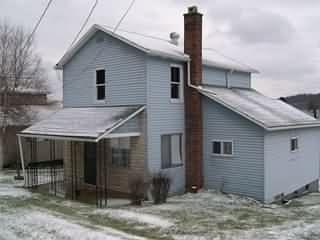
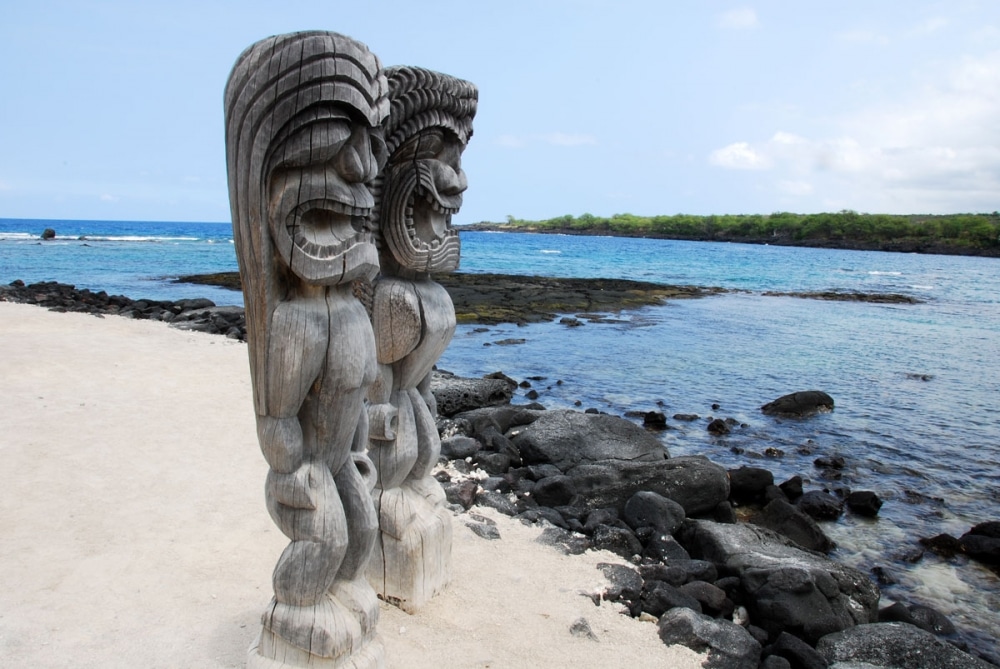
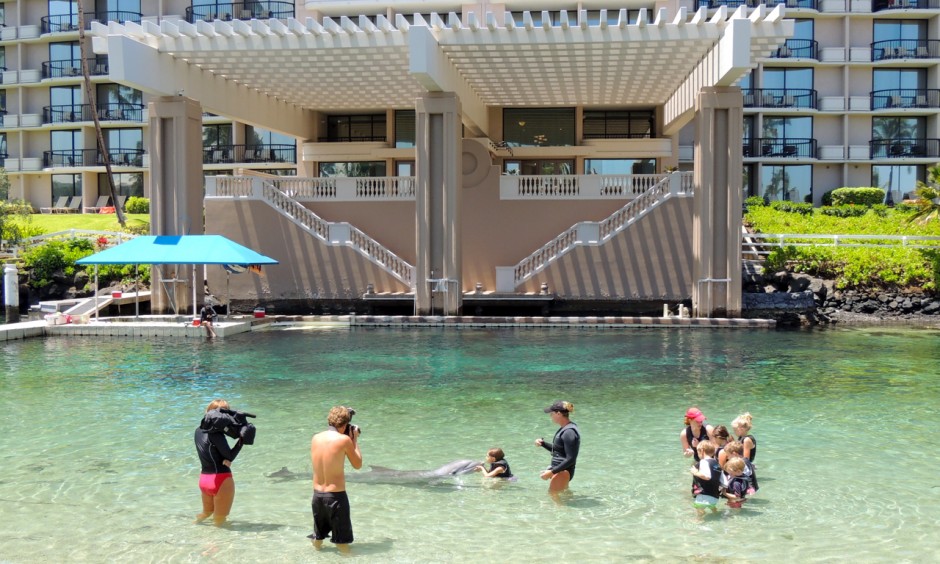
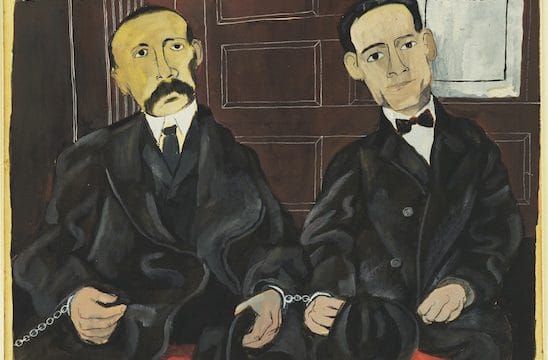
Excellent post, as always Michael. Your suggestions are very persuasive. There is a large incidence of these ‘private home’ museums in America, in comparison with the situation in Europe. The only similar institutions that come to mind would seem to be the great English country houses of the aristocracy. But here in the U.S., the phenomenon is associated with the cult of individual entrepreneurship. I’m happy that you point out that the wealth of these individuals was generated by the labor of thousands of anonymous and long-suffering hands. With regards to your point about the beaches, it is outrageous to permit private housing on any beach, in my opinion.
You elitist communist. Denying hard-working Americans the simple pleasure of fantasizing about a life of grandeur and luxury. So much for being the mouthpiece of the laboring class.
Plus, the modern-day version of these philanthropists are the saviors of our fallen public schools, donchya know?
OK, I said it, before someone who stumbles across this site might say it less gracefully.
😉
Albert,
Yes, indeed, there is a cult of individual entrepreneurship. Anything we can do to debunk this is a good thing. And private beaches are an outrage for certain.
Michael
Gargantau, Nice satire! Or at least I hope it is!!!
I liked the hostel idea, Mike. How would that movement get started? Where are you off to next.
Mike,
On my side of the country, we have Hammond Castle in Gloucester, MA. (http://en.wikipedia.org/wiki/Hammond_Castle) It’s not quite as big or grand as the Hearst Castle, but the underlying idea was the same. It’s original owner, John Hays Hammond, Jr., was an electronic engineer and inventor, who, while being born wealthy, increased his fortune by providing electronics technology to the emerging military-industrial complex in the US. While, he was an avowed agnostic, he willed his castle to the Boston Archdiocese of the Roman Catholic Church (Cardinal Cushing was a personal friend of his). The Church only held on to the property for a few years then the Church sold the property to the nonprofit Museum Trust, which manages it today.
Yes, it is satire — note the 😉 — although I’m not sure it is as successful as you make it out to be. Generous of you, though.
While I have you “on the line,” I do have a comment/question, though. Your Elko post both intrigued and puzzled me. Your positively gushing assessment of your recent experiences there seemed to have little or nothing to do with the socio-political consciousness of the folks there. (In this regard, it was something of a departure from most previous entries.) Rather, it seemed to have a lot to do with a few affirmative inter-personal experiences you had there. However, you’d have a hard time convincing me that Elko is an extra special place in this regard (not that there is anything unusually bad about the place, either.) Rather, the quality of your time there seemed (to me, at least) to be rooted in a random (?) shift of temperament, rather than “objective” factors. Please don’t take this as criticism — to me, the glowing report just illustrated the “human, all too human” character of your travelogue assessments. And that’s a good thing, in my view.
(Incidentally, I have been through Elko many a time back in the 70’s and 80’s, when my family made biennial road trips from Montana to the SF Bay Area and back, but that’s neither here nor there.)
Pivo, I don’t know how to start it. Maybe if anyone knows of a case where the process makes sense, a letter to the paper, attendance at a city council meeting, a petition, etc. could start the ball rolling. We’re going to head for southern Utah soon.
Jim, As always, thanks for the interesting information. Amazing he gave the property to the church. What a waste. Naturally the church converted it into hard cash. Oh, well the church has a lot of legal debts to pay!
Gargantua, I don’t doubt I would have a lot of problems if I lived in Elko. But we had been in Portland for two months, and we were ready to move on to a more beautiful place and get out and hike. Then we met some friendly people, not so gloomy as the folks in Portland. So we reacted to these things. Sometimes the US seems such a nightmare that anything that hints of normal human relationships feels good! Plus when you see the aspens gold and red, it is hard to get angry.
Interesting post Mike, maybe someday you can tour this house? 🙂
http://www.nytimes.com/2010/10/29/world/asia/29mumbai.html?src=twrhp
Mike,
Concerning Hammond, he died in the 1960s and the Catholic Church unloaded his property in the 1970s/ That was long before the current scandals, but the Boston Archdiocese back then was deep in debt because of the ambitious expansion plans that had been undertaken by Cardinal Cushing. As to why a professed unbeliever like Hammond would have bequeathed a value property like the castle to the Church, who knows? As I said before, Cardinal Cushing was a personal friend of his, and probably, like many members of his class, Hammond valued the role of the Church in keeping the common people, and other assorted riff-raff, in line.